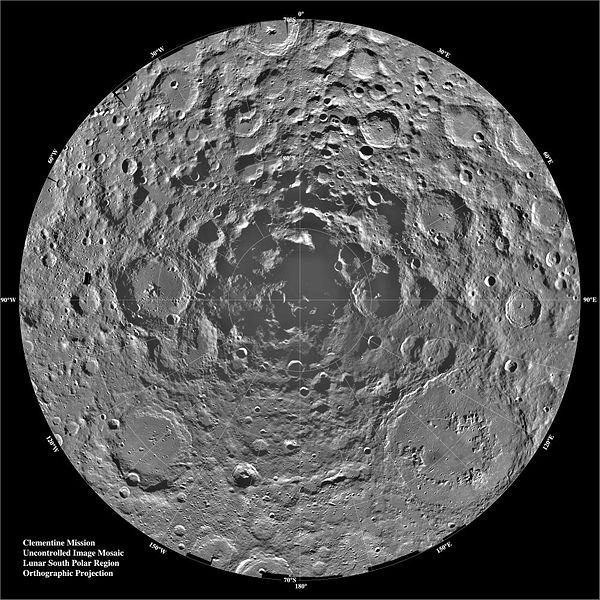Search for Water on the Moon with the Apollo Missions, Clementine Space Probe and the Lunar Prospector Probe
Potential for Water on the Moon
The search for water on the Moon dates back to ancient times when humans would simply look up at the satellite and dream of oceans and seas yet unexplored. As telescopes got better with time, most legitimate scientific minds relegated these dreams to pure fantasy. The exploration for water on the lunar surface seemed to further erode away as space probes began to land on the Moon, revealing a hostile environment that would cause water vapor to break up in sunlight and dissipate into space – a process known as photo-dissociation.
In 1961, however, researchers from Caltech speculated that the search for water on the Moon should be directed towards the poles. Specifically, the best chance for liquid to exist on the surface would be in craters near these areas. Indeed, it was deemed possible that water could viably exist beneath the surface. If this was true, it was quite possible for water to be located in the polar craters, essentially hidden from exposure to the Sun.
Apollo Missions

During the Apollo missions, many lunar rocks were brought back from the surface of the Moon. When these were studied initially, small amounts of water was found within the samples. This was dismissed at first as contamination from the mission or ground crew. However, further studies of volcanic glass ultimately identified water molecules in 2008.
The Apollo missions also obtained evidence of water vapor itself in 1971. During the Apollo 14 landing, an experiment using the Apollo Lunar Surface Experiments Package Suprathermal Ion Detector Experiment (SIDE), a mass spectrometer, identified ions from water vapor.
Clementine Space Probe and the Lunar Prospector
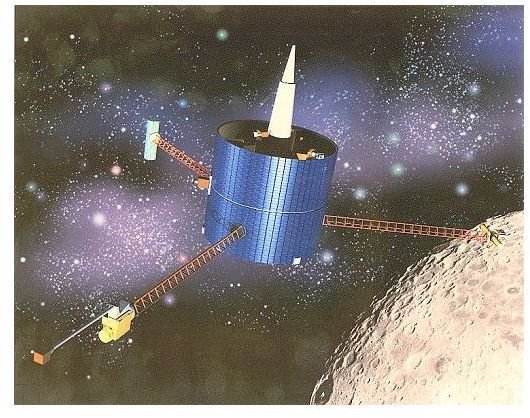
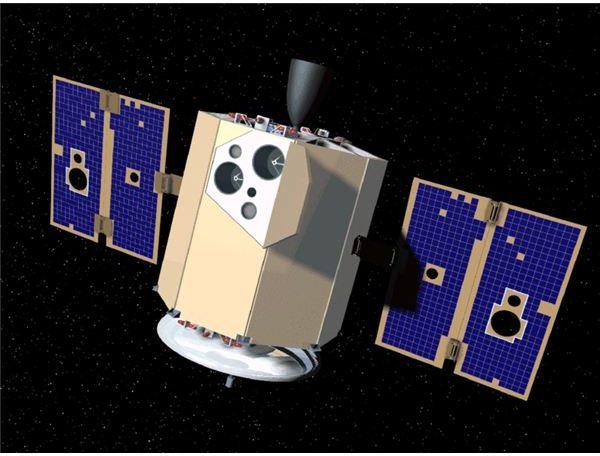
The Clementine Space Probe in 1994 is believed to have identified water ice in the south polar region. Using a transmitter, radio waves were targeted at the area of the Moon with a permanent shadow. The reflections were detected by the Deep Space Network, a series of antennas that facilitate deep space exploration. According to the reflected echoes, the surface was composed of icy material rather than rock.
Further experimentation to search for water on the Moon continued in 1998 with the launch of the Lunar Prospector probe. Studying the dust, soil and stones covering solid rock known as regolith, the probe found 50 parts per million of hydrogen. Judging from this fact, scientists theorized that water ice did indeed exist on the Moon, albeit in small quantities. When the mission came to a close the following year, the Luner Prospector itself was crashed into the Shoemaker crater near the south pole. Despite the impact, no identifiable water ice was broken away.
International Missions
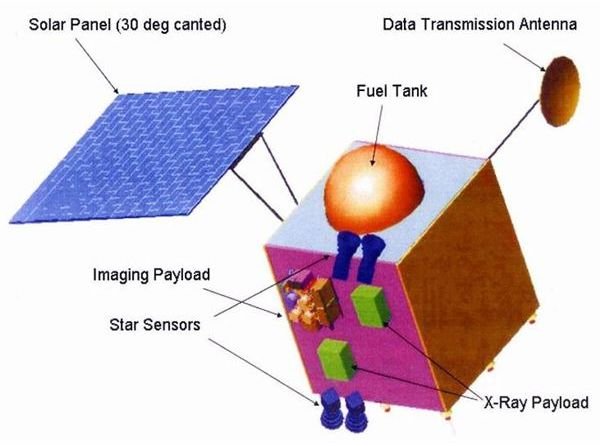
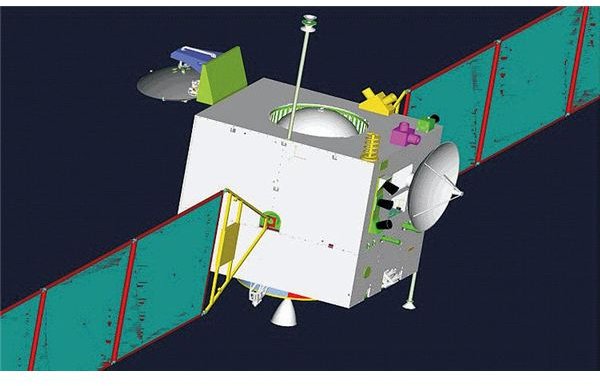
In the 21st century, a concerted effort to locate water on the surface of the Moon became a priority for not only NASA, but other space agencies as well. The Japanese probe Kaguya, launched in 2007 and responsible for various mapping and observational missions, used a gamma ray spectrometer to identify the elemental composition of the surface. It failed to find water ice in the craters. Chang’e 1, also launched in 2007, took detailed photographs of the polar region for the People’s Republic of China. However, any identification of water ice has not been released.
The following year, the Chandrayaan-1 spacecraft from India launched the Moon Impact Probe into the Shackleton crater, near the lunar south pole. This failed to identify water ice. In March 2010, the spacecraft reported that it had identified spots in northern polar craters permanently hidden from the Sun that may be water ice.
Lunar Reconnaissance Orbiter
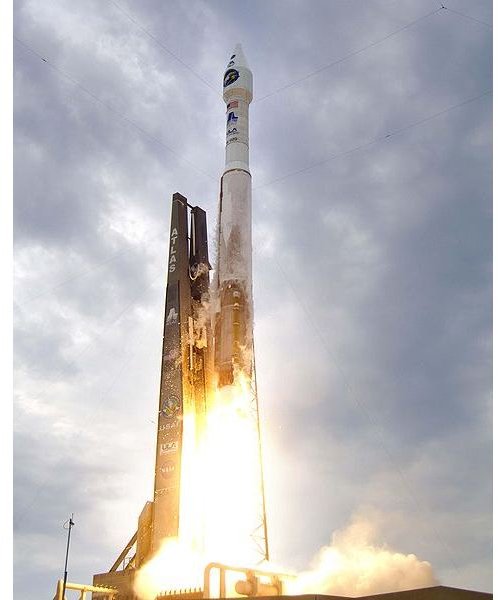
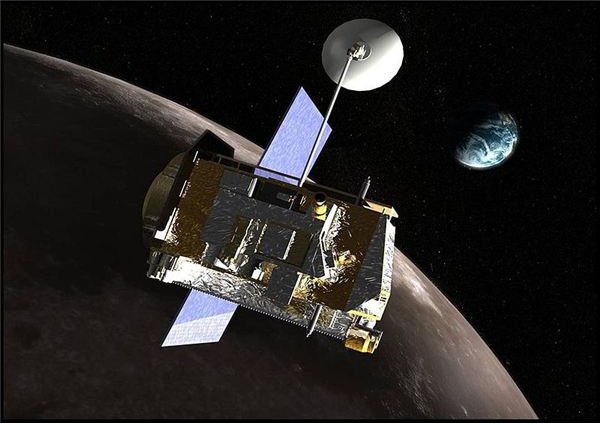
Perhaps the most elaborate attempt to search for water on the Moon was undertaken by NASA in 2009 with the launch of the Lunar Reconnaissance Orbiter. On October, 2009, upper stage of the Atlas V rocket that carried the vehicle into space was impacted into the Cabeus crater near the south pole. Using the Lunar Crater Observation and Sensing Satellite (LCROSS), NASA followed the rocket into the crater just as it ejected a plume of debris. According to the readings, water ice is indeed found on the Moon, but in very small quantities.
Ramifications of Water on the Moon
With the presence of water on the Moon, the scientific possibilities are nearly endless. In the event of future manned missions, this can have profound ramifications for the explorers. Depending on the quantities of water, it would be possible for an expedition to refrain from having to bring water with them, saving both time and money. In addition, water could be used for a potential permanent settlement for plant growth and even power plants. One of the prime components, oxygen, could even be harnessed for breathable air and rocket fuel.
References
“NASA Blasts Moon in Search for Water” Discovery News: https://news.discovery.com/space/nasa-moon-water.html
“Crash Course: Looking for Water on the Moon” ABC News: https://abcnews.go.com/Technology/Apollo11MoonLanding/story?id=8122893&page=1
“India Space Probe Seeks Fusion Power Source on Moon” UPI: https://www.upi.com/news/issueoftheday/2008/10/22/India-space-probe-seeks-fusion-power-source-on-moon/UPI-29091224688030/
Image Sources
South Pole Region of Moon. (Supplied by NASA; Public Domain; https://upload.wikimedia.org/wikipedia/commons/0/0e/Moon_PIA00001_modest.jpg)
Apollo 14 Shepard. (Supplied by NASA; Public Domain; https://upload.wikimedia.org/wikipedia/commons/0/09/Apollo_14_Shepard.jpg)
Clementine depolyed. (Supplied by NASA; Public Domain; https://upload.wikimedia.org/wikipedia/commons/3/35/Clementine_Deployed.gif)
Lunar Prospector Orbiter. (Supplied by NASA; Public Domain; https://upload.wikimedia.org/wikipedia/commons/4/4c/Lunar_Prospector_orbiter.jpg)
Cheng’e 1. (Supplied by NASA; Public Domain; https://upload.wikimedia.org/wikipedia/commons/a/ad/Chang_e_1.jpg)
Chandrayaan-1. (Supplied by NASA; Pulbic Domain; https://upload.wikimedia.org/wikipedia/commons/0/08/Chandrayaan-1.jpg)
LRO 2006. (Supplied by NASA; Public Domain; https://upload.wikimedia.org/wikipedia/commons/0/06/LRO_2006.jpg)
Atlas V. (Supplied by NASA; Public Domain; https://upload.wikimedia.org/wikipedia/commons/1/13/NASA%E2%80%99s_Lunar_Reconnaissance_Orbiter_and_Lunar_Crater_Observation_and_Sensing_Satellite_leave_the_launch_pad.jpg)
This post is part of the series: Great Moments in the Exploration of the Moon
Since the dawn of human civilization, mankind has looked to the Moon in awe and intrigue. During the late 20th century, humans finally had a means by which to explore the surface of the planet both with men and machines.
